Calculating the value of a bulk lot
Posted by Huw,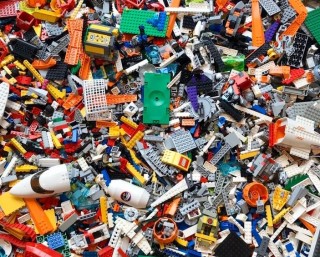
Today's guest author Nathan Masters recently needed to write a paper related to mathematical formulation, so he wrote about deriving an equation to assign a score to the bulk lots of LEGO he's picked up over the past few years.
He thought it might be of interest to other AFOLs so we are reproducing it here:
As an AFOL (Adult Fan of LEGO) on a budget, I am always on the lookout for opportunities to get the most bang for my buck when buying those fascinating little bits of plastic. A quick look at the current product range and some simple arithmetic will show that on average, new LEGO sets cost about 0.1 USD/piece.
Before I look at how to find LEGO for less than that, I want to note that different builders may put higher value on buying new sets to build and display, not caring much for loose pieces. Others are much more interested in buying as many individual parts as possible at bulk pricing, preferring to “free build” rather than follow instructions from the boxed kits.
I find myself in the latter category and the rest of this post is based on my pursuit of sourcing genuine LEGO parts on the cheap.
How much can be saved by purchasing a second-hand stash of parts? Depending on what it is and how it is sold, used LEGO can range from under a cent per part to several times its original retail price. The high dollar commodities tend to be large sets that saw limited release or are considered more exclusive to collectors, even in used condition. To find prices substantially lower than off-the-shelf value, unsorted mixed parts can be bought in lots, often sold by the pound.
This is where the estimation math gets a little dicey; the incredible variation of LEGO pieces makes it hard to nail down a decent average for how many pieces will be in any given pound of LEGO. Accounting for potential off-brand and random toys mixed in with the rest makes it nearly impossible to set a standard rate.
That being considered, I can look back through about 20 purchases of 1000+ pieces (yes, I counted) and share a range that covers most of the spectrum: bulk LEGO goes from $3-$10/pound, with anywhere between 300 and 600 pieces per pound. These rough bounds give an equally rough estimate for what I can expect to pay per piece, assuming the lots contain 100% LEGO: for the rather expensive $10/pound lot with only 300 pieces for every pound, I’m paying just over 3 cents per piece – decent savings from the off-the-shelf rate. At an insanely cheap $3/pound lot with 600 pcs/pound I can stack up pieces for half a penny each: 20x more value compared to the store-bought bricks. From this sample space a starting estimate for used bulk LEGO is 0.5 to 3.3 cents per piece.
A quick note on why bulk LEGO can be so much cheaper: blame entropy. It varies from one collection to another, but when a bin of used LEGO comes up for sale it most likely has an aggregate of undesired components. The inferior knockoff bricks or similar brands of toys can make up a considerable volume of the lot, which is usually acknowledged by the seller.
Used LEGO is often dirty and requires a rinse at minimum, with some of my purchases requiring much more involved cleaning efforts. All this translates into a time investment on the buyer’s end, even more so if it will also be sorted into my existing framework of parts management. These hours are anticipated by the buyers who set the pace of the market and account for most of the price difference, but at the end of the day it is still used LEGO and is worth less than shiny new bricks on a piece-by-piece basis. Good comparisons can be made with the online marketplace known as Bricklink
Figure 1 – The same brick priced according to condition on Bricklink (October 2020)
These selected 17 purchases, each containing over 1000 LEGO pieces, left me with a desire to compare them at the quantitative level. Which lot had the highest percentage of junk? Which one had the most pieces per pound? For purchases dating back to April 2018, I am in a unique position to actually make direct comparisons because I have painstakingly tracked exactly how many pieces were in each lot over the last couple years as my interest in data management became part of my hobby.
In addition to surface-level comparisons across these lots I wanted to develop a form factor that would normalize the variation out of each collection and provide a single numeric score, enabling a ranking that could be weighted according to what I find important in a bulk lot.
Step 1 was to find the percentages and pricing associated with each lot. Where data was available I also worked out the information related to weight (9 out of 17 lots). My calculation of a “Value Score” incorporates the price/piece, percentage of useable LEGO brand pieces in the lot, and percentage of broken LEGO. I put a much higher emphasis on the final price/piece, but %LEGO and %Broken are also important factors to me when comparing these collections.
Step 2 involved the formulating of my Value Score equation based on the selected factors. This was a matter of noting which factors I wanted to minimise and which I would like to maximise. For a higher score indicating a higher value:
- Price/piece should be minimised: inversely proportional: Term is in denominator
- %LEGO content should be maximised: directly proportional: Term is in numerator
- %Broken pieces should be minimised: inversely proportional: Term is in denominator*
*for this last factor it is important to deal with the case in which there are no broken pieces, which causes an infinite value score. This was a simple matter of making the term a function of unbroken pieces by using (100 - %Broken pieces) as the factor. This flips its placement in the equation because the term will be larger when there are fewer broken pieces. It should now be placed in the numerator and can then be weighted accordingly:
Where A, B and C are the respective weights for the selected factors in my Value Score. As mentioned in step 1, I have a higher priority for the price factor, and care slightly more about %LEGO content than %Broken pieces found in the lot. These preferences are reflected in my initial choices for the weight coefficients: A = 0.9, B = 0.06, C = 0.04. Table 3 shows the resulting Value Score for each lot in the second column.
Step 3 takes the entire process one step further with the introduction of a Normalizing Factor. The Value Scores in Table 2 are useful for comparing the example lots to each other but there is no given baseline. Such a Normalization would provide a measuring stick for how well my purchases compare to an arbitrary “Par Lot.”
With the Value Score equation already in hand, I only had to choose parameters for the Par bulk lot in the same categories I am using in the other lots. The resulting Value Score of this imaginary lot was then divided through the real scores to normalize everything to a given performance baseline.
I chose 3 cents/piece, 85% LEGO content, and 1% Broken LEGO for the baseline; these are properties I would be happy to see while knowing there are better lots out there. An interesting result of the factors used in the Value Score equation has left the baseline completely independent of overall size: it could apply to a lot of 200 pieces or 20,000 pieces (more on this at the end).
Plugging these choices into EQ(1) returns 7.48. The third column in Table 3 contains the Value Scores after being divided by Normalization Factor “K” = 7.48:
From the table I can draw definitive conclusions. The highest-scoring lot was #16 at 4.236, meaning that it has about 4 times more value than a lot with the properties of the baseline (3 cents/pc, 85% LEGO, 1% broken). Tracing this lot back through the previous tables shows that it worked out to only 0.81 cents/piece with 96% LEGO and 0.17% broken. This is the lowest rate out of all 17 and happens to be the largest purchase in terms of quantity, suggesting more value is inherently associated with larger lots.
The lowest value lot is #6. This lot had good %LEGO and low %broken but cost 2.4 cents/piece which has a higher impact on the overall score. My current factors do not say anything about the actual contents of the lot, but that becomes subjective and detracts from the main goal of this analysis.
In these three steps I have accomplished the goal of analytical comparison and gained a method to apply a baseline to generate meaningful scores for my bulk LEGO purchases. A few more thoughts to wrap up the discussion:
This kind of analysis is completely dependent on having the lot data with some confidence of its accuracy. For my lots I have personally counted each individual piece, LEGO, knock off and otherwise, with the intention of having the numbers to run these kinds of calculations; error is perhaps ±1 piece per 500, as I often make multiple passes and sorts. I am under the impression that not many AFOLs would be excited about doing this themselves, especially for lots that reach into the tens of thousands of pieces.
Estimates could be obtained by using the weight of the lot, but as I discussed at the beginning there is room for large deviation here thanks to the range of LEGO pieces and their given distribution in any one lot. These margins (hundreds of pieces) were one of the main motivations that started me counting piece-by-piece. I have been following the prospects of automating this tedious task but that is a fascinating topic for another day.
My Normalized Value Scores are all higher than 1. Another approach to normalize the scores would be setting K equal to the average raw score and then dividing to see which lots are performing above and below average, and by how much. I may do this in a subsequent analysis but my intention this time around was to focus on how well I have selected bulk lots that exceed a given baseline, the properties of which are entirely subjective.
Along with the baseline, the weightings on the three factors used in the Value Score are subjective, potentially even more so. There is also the potential to include additional factors with their own weightings to suit personal preference. These could include a measure for how clean the pieces are, a preference for larger or smaller lot quantities, the inclusion of minifigures, an adjustment for the age of the lot, etc. By following the basic structure of my Value Score equation, any combination of these factors could be formulated. If a comparison doesn’t require certain factors simply set them to one for that run of scoring.
In addition to measuring the performance of bulk lots I have bought already, I will be using an estimated Value Score to gauge the potential of lots I may want to buy in the future. If the seller has a weight listed and a few images to make a guess on %LEGO content, I can set upper and lower bounds for each factor and therefore rough maximum and minimum Value Scores.
Even though I have bought enough lots to get a gut feeling for a particular collection, this tool can show how much better or worse it would be compared to what I’ve found in the past, though it can only provide a range of scores to compare. Depending on how much detail is included with a given listing, this range could be narrow or wide, an exact score is not possible unless the quantities are known.
All calculations performed with Excel, which provides an ideal workspace for changing weighting values and the performance baseline without having to update the other cells.
144 likes
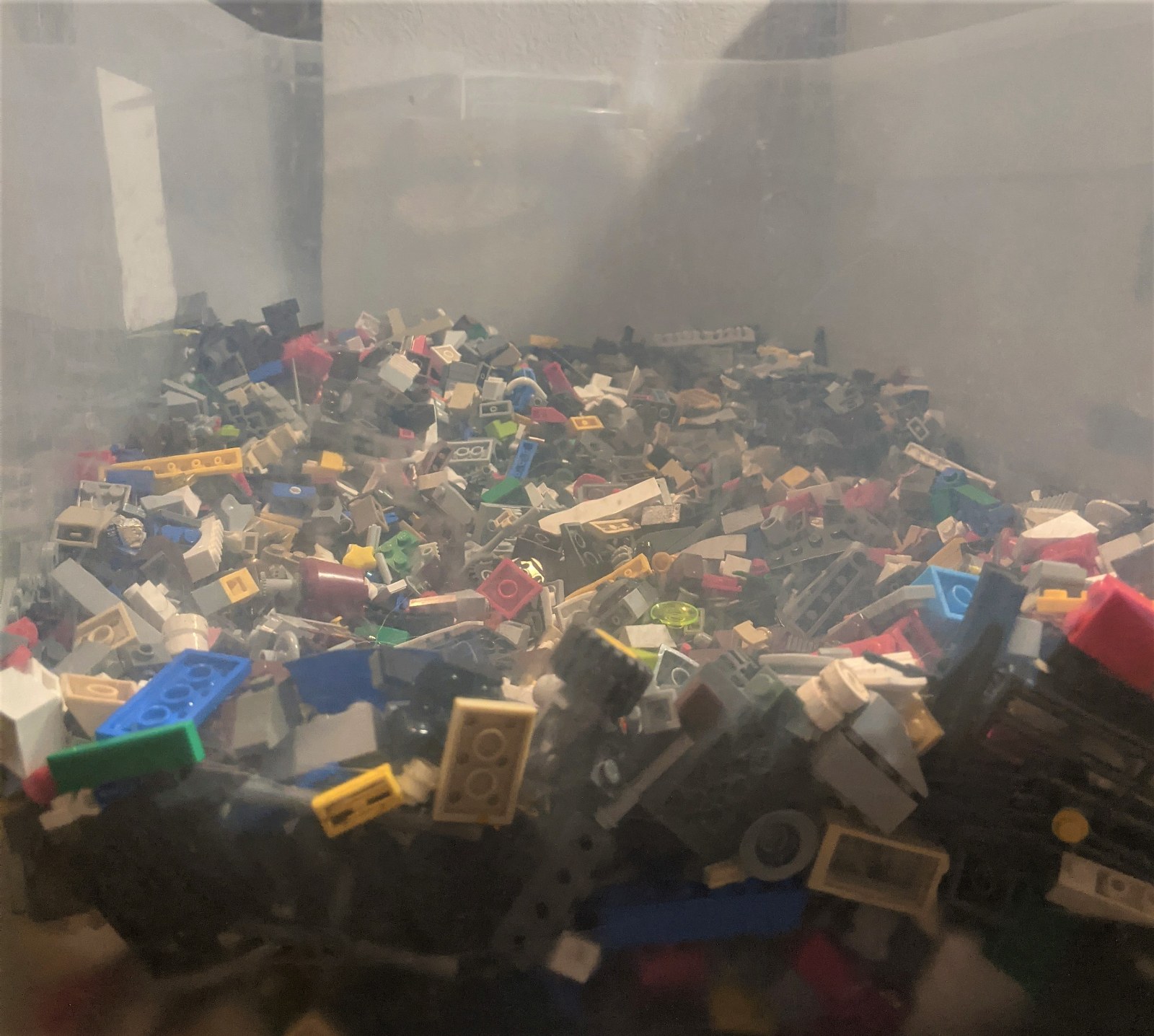

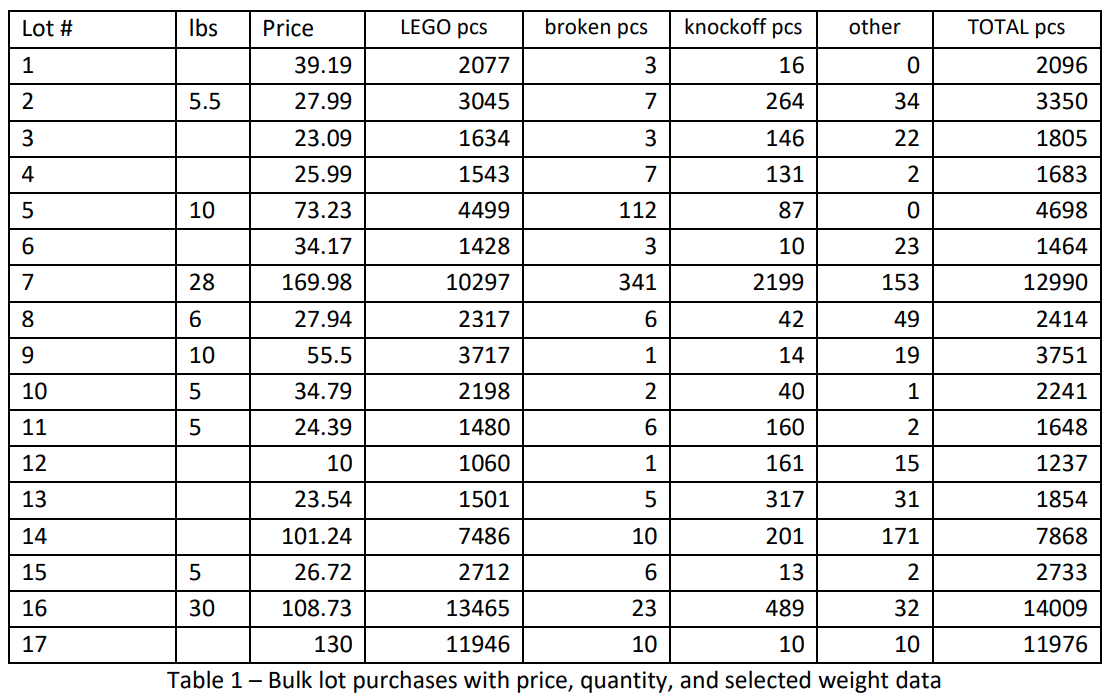
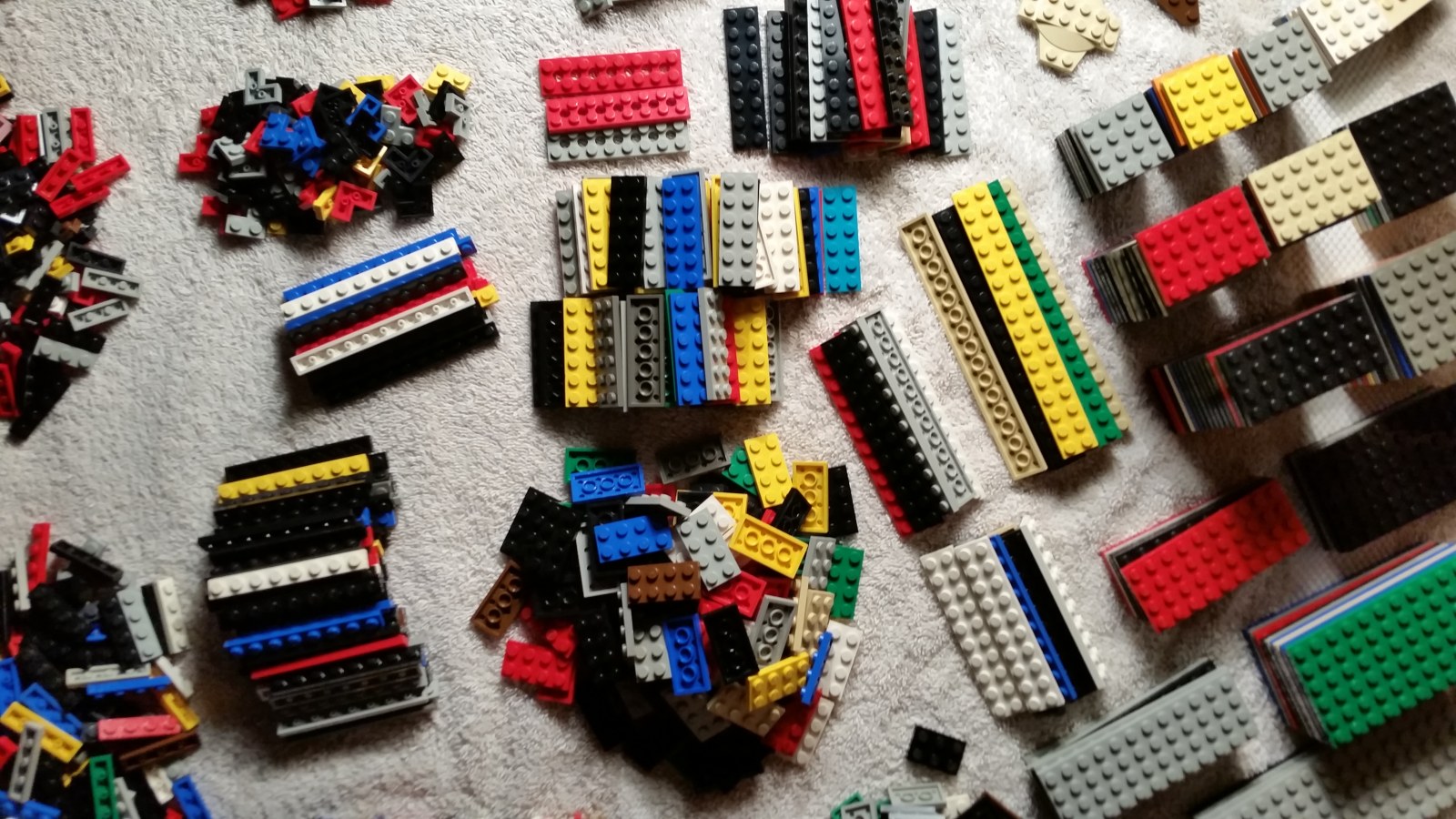
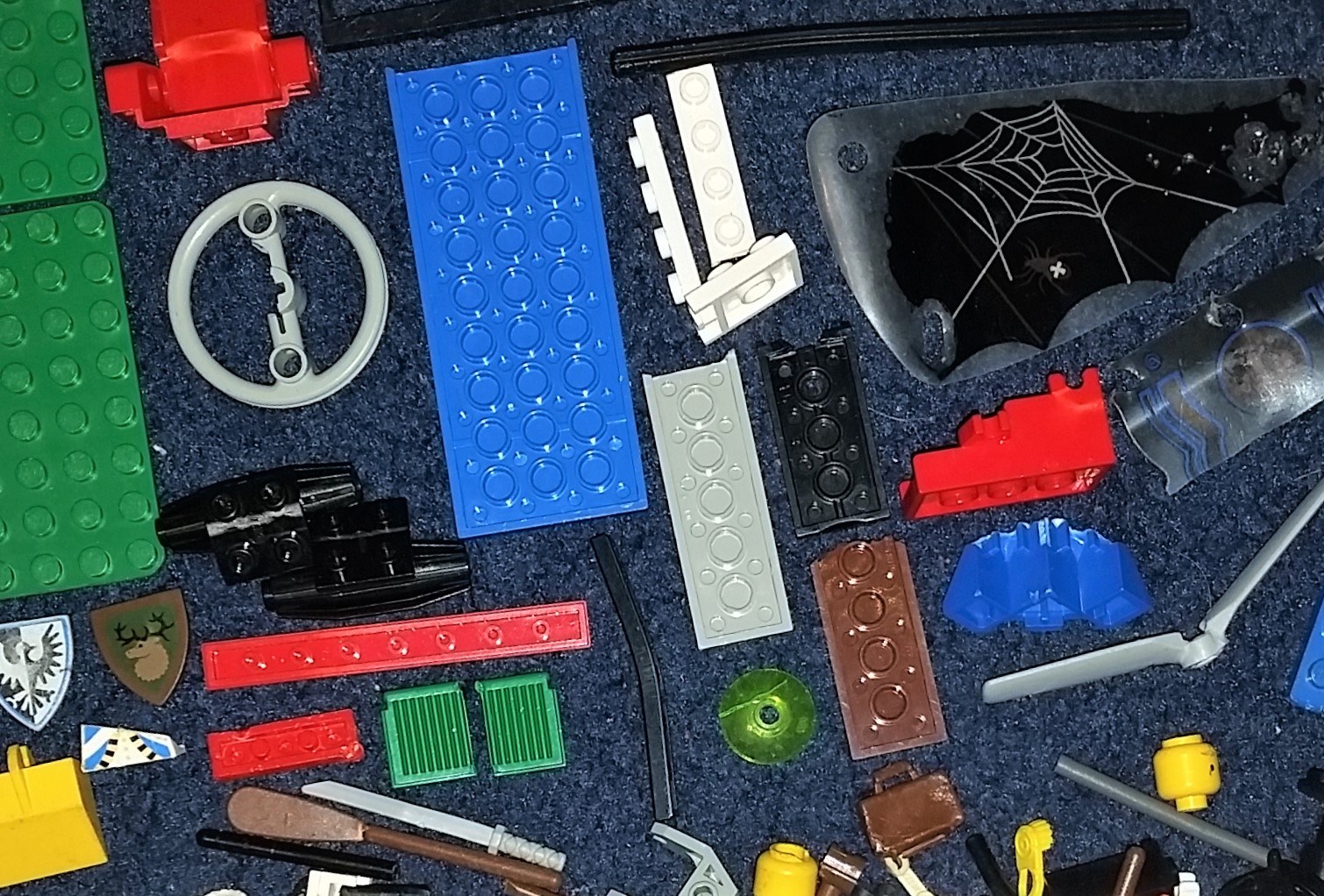
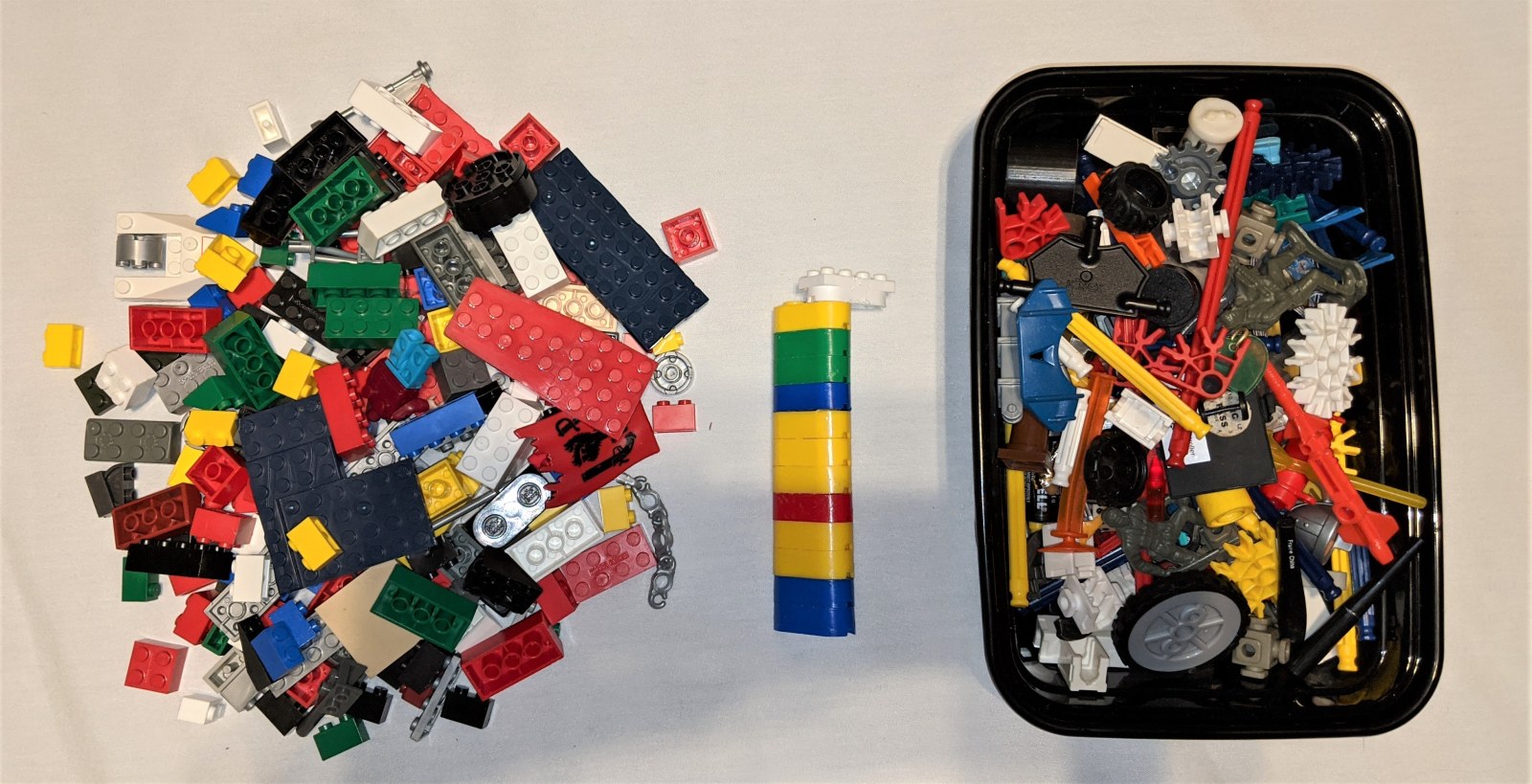
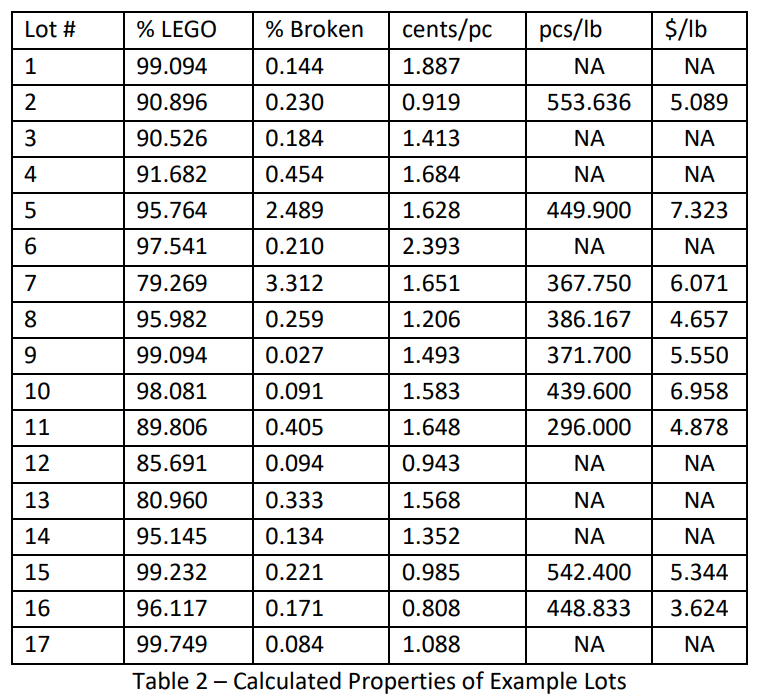

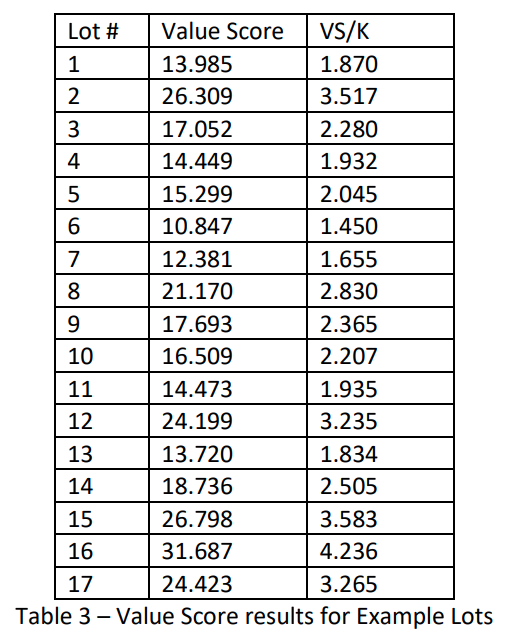
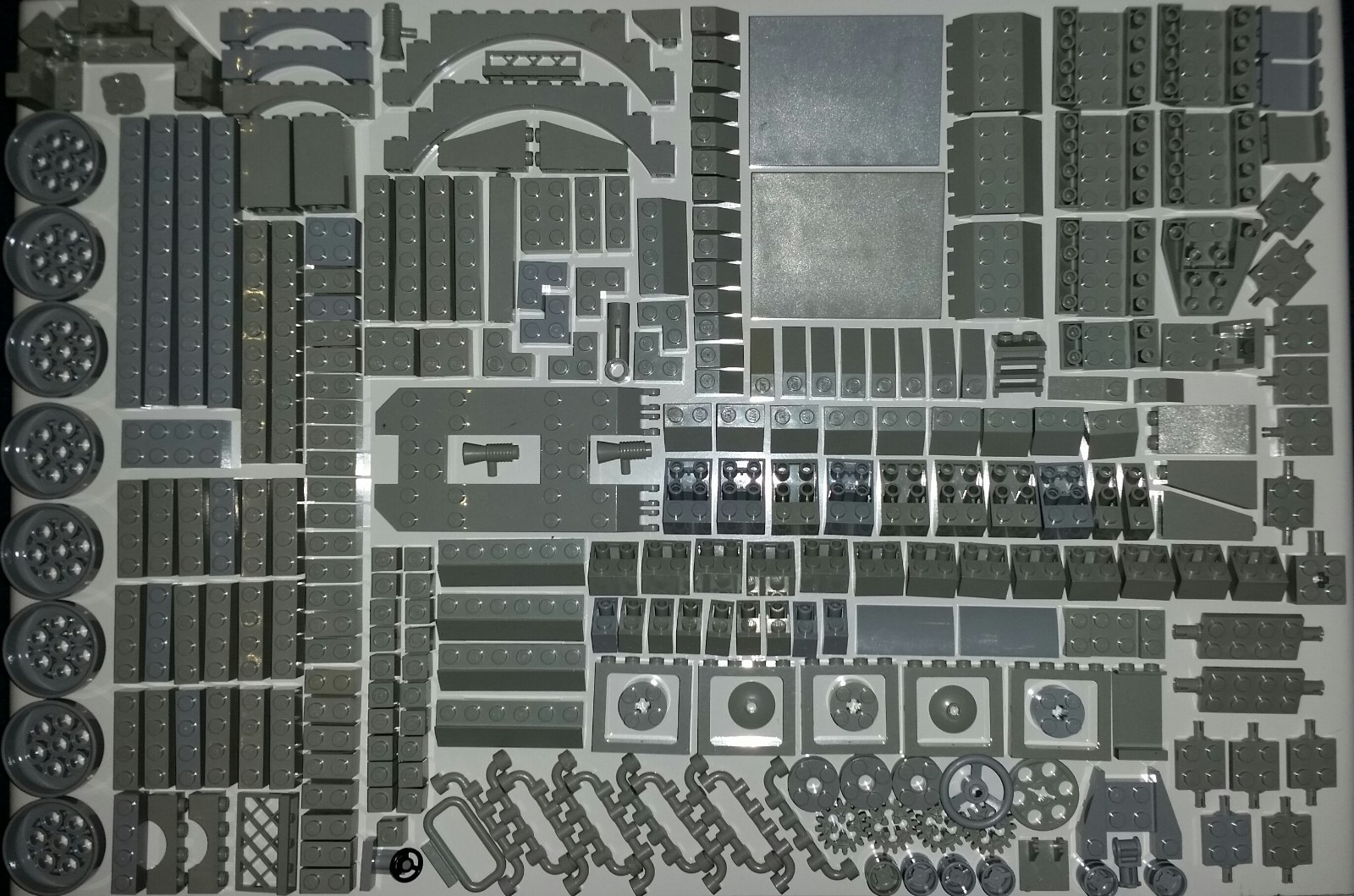
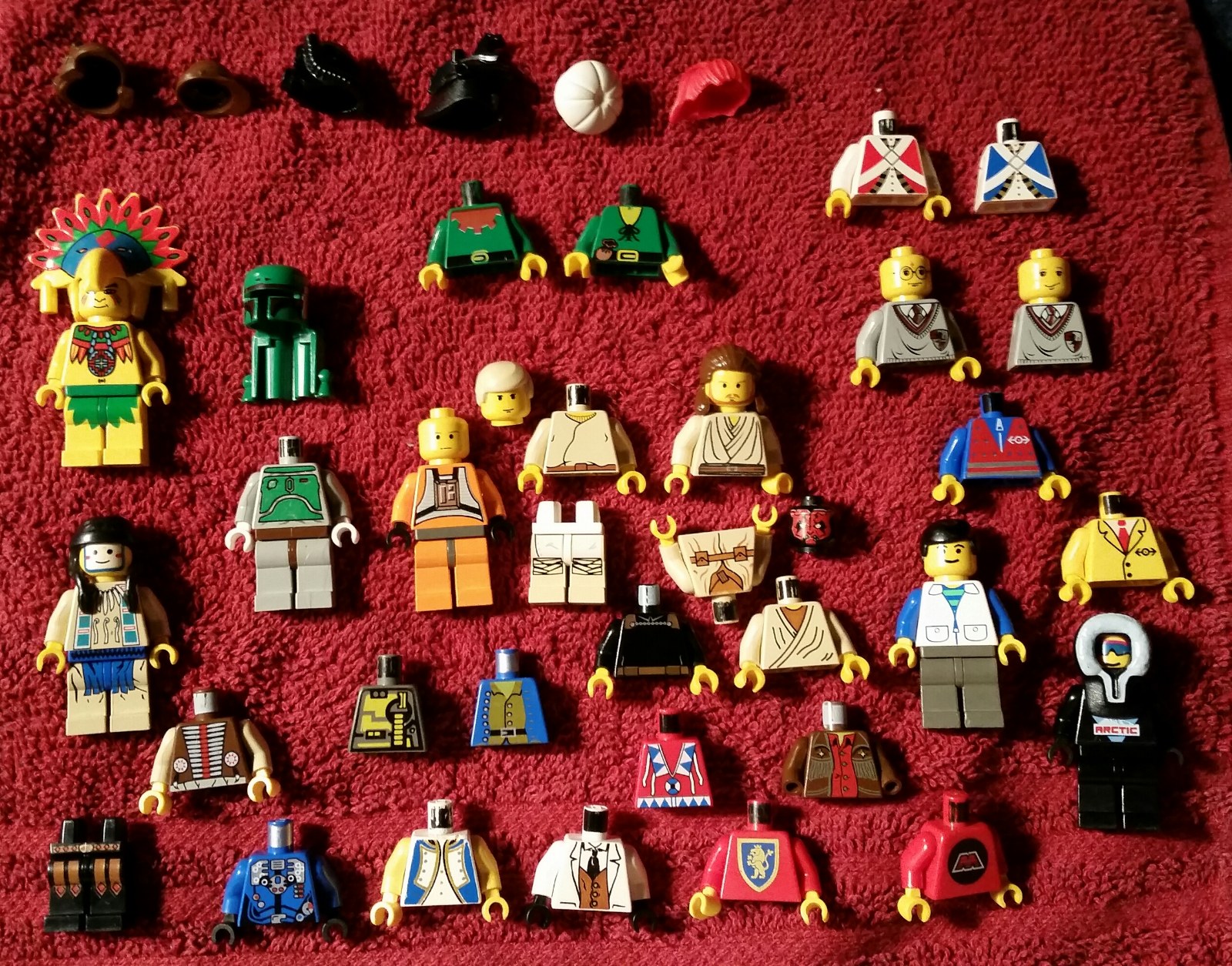
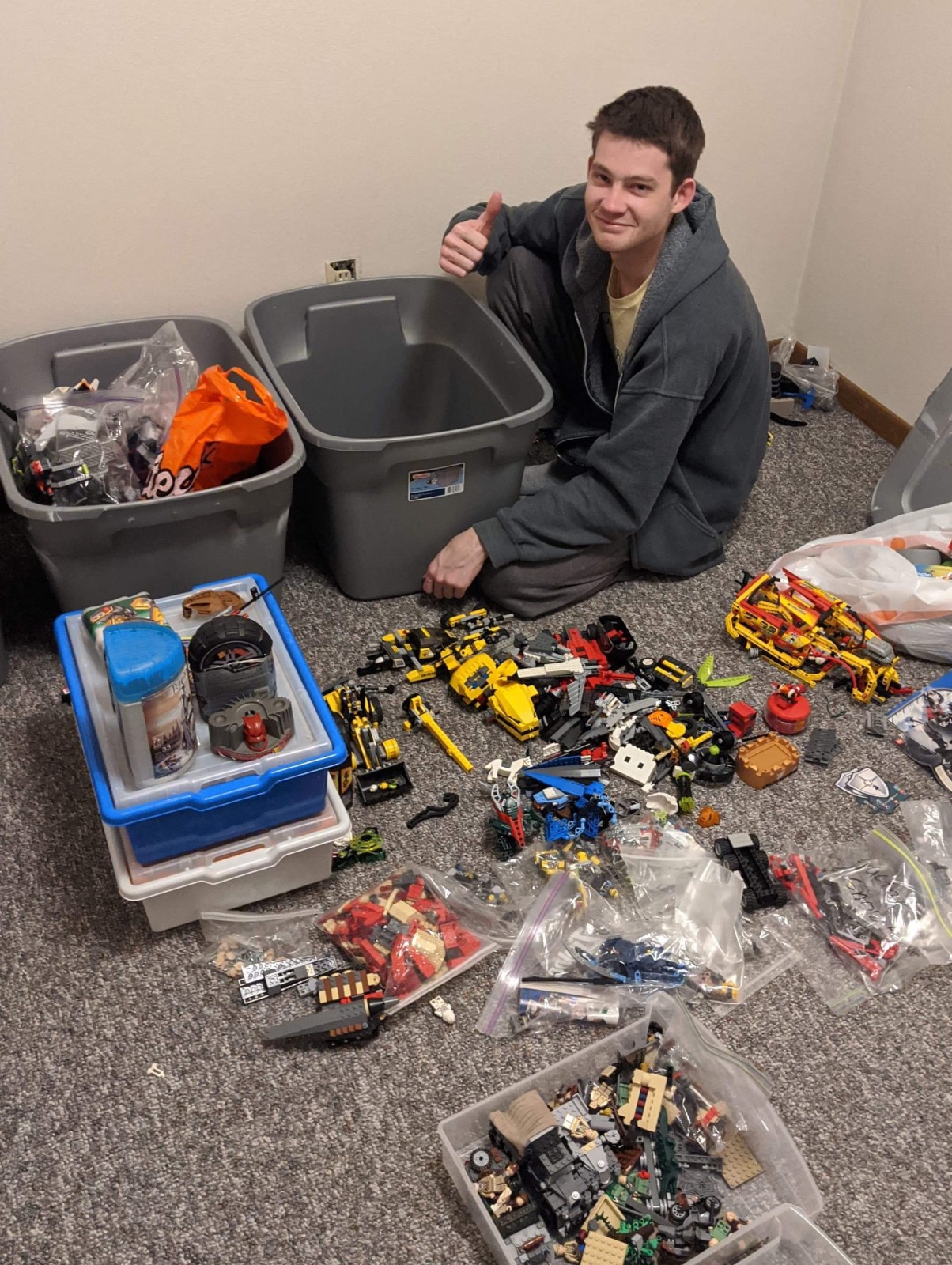
59 comments on this article
Very interesting and fascinating.
But I stopped buying bulk lots as I got tiered of cleaning every piece with a toothbrush. Let's say that I also have enough standard bricks and plates.
So when I buy second hand I like to grab and search in boxes to get specific parts.
This is fascinating and I appreciate the effort it took. But how can it be made useful? Can we develop sales standards that assure a bulk lot has certain qualities? How could an expert (or expert system) be taught to assess the value of a bulk lot from pictures? If we could build a sorting machine which could identify pieces, could it grade them as well?
As you pointed out, ALWAYS wash used LEGO lots, you don't want dirty brick. People can be gross, and we don't want our bricks to be all sticky and whatnot
Proper geeky stuff, but totally fascinating. From my bulk buys I have had both the disappointment of too many knackered parts, non-Lego and fake Lego pieces, and the joy of finding some really rare pieces and complete classic sets! Good article.
Excellent analysis! I suppose having a history of sellers' names / locations / additional information would add value to the calculation to apply in a real-world buy, where the bulk lot is a basically blind purchase. Relying on user-rated stars is not always the best method; that can be fudged.
That hurt my brain! Around a tenner a kilo. Go to eBay, bid on a lot you like the look of, set a maximum price you’ll pay. Job done. That’s my formula anyway.
I support my Lego hobby by buying and re-selling bulk lots of Lego. I focus on bulk lots that are from a family so likely I can sort and rebuild any sets that are complete and sell them on for profit, as (generally) I find this gives the biggest return on the initial investment. So for me it’s about spotting lumps or partial sets that guide what I buy rather than just weight and individual parts. I always check if the seller has sold loads of Lego previously and try to avoid those that just mash lots together and sell by weight, although I get these are valuable to BL store owner
Ah, there's nothing like a box of random parts.
I do not like to buy bulk used parts. I rather buy parts that I need for my MOCs. It is more expensive, but I do not have a lot of loose parts that I do not need.
@Xiaolong said:
"Very interesting and fascinating.
But I stopped buying bulk lots as I got tiered of cleaning every piece with a toothbrush. Let's say that I also have enough standard bricks and plates.
So when I buy second hand I like to grab and search in boxes to get specific parts."
Yes. To buy used bricks is the last option - only when the item I want is not available in NEW/unused condition - you never know what has happened to the bricks in the past (use your imagination).
Proper geeky stuff indeed but since I also like statistics I found it really interesting (although helpful after the purchase has been completed - to rate a seller perhaps?). Beyond that, it's the fulfillment of our geeky selves that "want to know"/calculate certain things like percentage of broken pieces, knock off bricks etc, which I am personally also fond of.
I no longer buy used bricks due to the things I have seen the first 4 times I've bought some (maybe 3-4 kilos combined), that narrowly made me throw them out of my window. They only got away with being thrown purely because I felt pity for them. Yes, pity for the pieces. But there is only a certain amount of "dirt" a man can stand. Plus they are like a blind bag. You never know what you will find. Literally :P
Bricklink is my friend for quite some years now, especially its new/unused pieces sellers.
What I DO wonder though (and a question to those bulk buyers out there), is whether there is "profit" in selling the remainder knock off pieces after all.
I think the equation could benefit fro the addition of %minifig parts. Those tend to raise the value quite a bit, especially if you get some rare parts.
I like to buy an occasional bulk LEGO lot too. It's like a treasure hunt for me. Thank you for sharing all your fascinating data. Very helpful. I hope your paper got an A+.
I don’t spend much time with used bulk anymore but this is a fascinating write-up regardless! Seeing how far people track the minutiae is very interesting, and it seems like you’ve got a finely honed system. Excellent work!
The best lot that I have ever gotten is one that I found at a thrift store for $50. It was probably 90% real intact LEGO and took many hours to sort and clean, but, in the end, it was 50 pounds of LEGO for $50 and a few hours of work.
Interesting analysis!
A, B, C and K are subjective and therefore only useful to Nathan and those who happen to agree with his weightings and baseline.
If you had sufficient data from a representative sample of buyers with their weightings and baselines, you could derive estimates that would apply to bulk lots more generally. I would need to do the stats to work out how much data would be required, across what sample size of buyers and what the deviations (or errors) would be.
As already mentioned in this thread, you may want to consider other variables such as minifigure parts and how dirty parts are.
Thanks for the article! I very much enjoy buying random lots, since it's usually full of surprises, with rare parts, or sometimes even complete rare and vintage sets with instructions and boxes.
Some lots are as new, while once I had a lot that I got for free with a set where literally every brick had multiple chew marks on all sides.
In the Netherlands, the mixing in of knock-off brands is hardly an issue, since they have only been allowed in more modern times, and they are not very popular around here anyway.
I could write about the way we buy our bulk lots in the store I work at but I think I signed an NDA about that. But usually we get out more in sales than we've invested in buying them.
Thank you for the article. When I came out of my dark age a few years back I did not think to track this sort of data, and was buying way too much bulk Lego at Savers to have ever gotten it done. My first purchase there was a complete 10188 for $56 ($0.015 per piece), and I guesstimate that most of the Lego I purchased there over the las few years has averaged between $0.01 and $0.03 per piece for around 300K pieces.
Absolutely wonderful article, N. - I love seeing this kind of content on brickset. I don't personally buy bulk lots but this is highly informative. And even the stats people have noted how your analysis can be derived up or out to apply to someone else. Bravo!
True value of used lots usually comes in the form of either super expensive parts or figs hidden within or complete vintage sets.
Careful study of pictures of listings and simply asking a couple of polite questions of the seller can help find value. Since I got back into lego 2.5 years ago, I've made 56 used lot purchases and they've all made money on return from sales. On top of that I've kept UCS SSD, UCS R2, Black Pearl, Queen Anne, classic castle 375, Galaxy explorer, Grand Carousel, Green Grocer, Simpsons House, UCS Death Star, (probably forgetting a lot of others) and given my kids probably 50 random town sets.
On top of all that, it's like a treasure hunt and just a fun side hobby. It does seem that lots are way more expensive this year though and I've only found 1 good deal in the past 6 months.
I never buy bulk lots anymore. I used to, but the experience often wasn't a positive one. Plus, at least over here, prices have gone through the roof in recent years even for the crappiest of lots, so very hard to find good deals anyway.
Nowadays I only buy what I need specifically from BL or B&P, and have not regretted it one second.
I really wish people weren't so dirty, kids I get, but I've stopped buying bulk lots as they are typically disgusting. When I see people displaying or posting images of their Lego on the carpet or floor I usually cringe just a little, doubly so if there are pets in the picture. I do like the idea of bulk lots but in practice, not so much. It is good to have a range of price for sure.
I hoped this article will have some ideas about how to assess the value of bulk lots. But instead it's just a story about one's journey to have more data about his stuff that is unusable for others irl. Thats a pity. But i applaud the effort for having that data, that's quite a work.
A great article well done and a great insight into another side of our hobby.
Interesting article. For me, I've only recently bought a few bulk auction lots in the 10-20 pound range. First one was a lot that looked to have some interesting pieces for me but was probably my most expensive purchase. In my search I zeroed in on lots that looked like they had a lot of pieces for themes/sets I'm interested in collecting. In the end I think the value is subjective based on what one is actually looking to buy the lot for. I passed on quite a few I really would have liked because the prices just got way too high on the auctions. I may start trying to check out some garage/yard sales in the future. I've yet to see anything listed on local offering sites that seemed reasonably priced.
Very interesting comments about bulk lots. Yes they can be very dirty, but a bit of hot soapy water with bleach and a scrubbing brush sorts that out! I’ve received a large order from Bricklink that was absolutely filthy, and a few bulk eBay purchases with very clean Lego. It’s just the luck of the draw. Just have to study the pictures on eBay very closely to spot any mega blocks etc.
That would be an ecumenical matter.
@CCC said:
" @AustinPowers said:
The same is often true in the UK. Too many people have the view that LEGO is worth its weight in gold these days. Of course, there is always the occasional good deal, but quite rare these days."
Agreed. It's been a while since I bought a bulk lot (Bionicle I believe) but it was excellent value - I got 3 incredibly rare pieces and at least 10 sets out of it. So there are gems out there, people who don't realise the value of what they're selling. That said, it has been several years since I saw really good deals on anything worth getting, but at least we have Bricklink.
Keeping it a bit simpler to determine the value of a lot I would see how many large beams, plates, tiles, panels etc. there are as value on BL tends to go up very quickly per stud. Then look at number of non-standard, round and curved bricks or plates as these are more expensive. However, for blind lots, e.g. the picture is only an illustration, I have a feeling all these larger, non-standard or curved bricks, plates have already being sold individually elsewhere, so might as well just bid on a 1000+ creator bin.
Used bulk lots are usually cheap, but it mostly depends on situations and the seller. In a garage sale situation and if the seller is not very knowledgeable or selling it for someone, you can get really cheap price maybe $10 for a box of 5 lbs/thousands of pieces. It has to be very cheap since no one will check every single piece one by one. You don't know how many are real lego, how many are broken/defective, and of course mostly very dirty. You cannot pick the pieces you want and you get whatever it happens to be there. There's no control whatsoever. Some people would never buy any used bulk lots and would rather go bricklink or Lego store to pick the pieces they want.
Most people see a adult playing with children toys, we see a sophisticated man doing hard mathematics with geometric bricks.
@Xiaolong said:
"Very interesting and fascinating.
But I stopped buying bulk lots as I got tiered of cleaning every piece with a toothbrush. Let's say that I also have enough standard bricks and plates.
So when I buy second hand I like to grab and search in boxes to get specific parts."
Do not use a toothbrush as it scratches the pieces. Instead use a brush with natural hairs - much softer.
I have not found that a toothbrush scratches the parts: I use an old, worn-out soft-bristled toothbrush. Used parts are scratched already; getting them clean is, to me, more important.
I love the thrill of the bulk lot hunt! But as others have said, the deals are becoming fewer. People are looking for outrageous prices of >$10/lb. Even at $10/lb I balk at many lots. I try to stay at around $5/lb, maybe more if there seem to be more modern parts, or a good deal of minifigs. I enjoyed the analysis!
I'm glad he acknowledged the cleanliness of used bricks. For me it's the worst aspect: it's very tedious to clean some dirty lots, and then sun damage is even trickier to deal with and requires oftentimes buying new pieces. I've had a few bad experiences over that where the sellers claim the sets are nice, but they end up incomplete, damaged and very dirty by a serious collector's point of view. I tend to go for new sets since, even though some older sets really get marked up because of that...
This tangential discussion about cleaning parts might be worth a separate article/series.
I don’t buy bulk very often, instead going through BrickLink for specific parts needed for the MOCs I’m building. I order “any condition” for most, but for white parts, new if possible. Yellowing and dirt is too obvious on used white parts.
@aamartin0000 said:
"This tangential discussion about cleaning parts might be worth a separate article/series."
I agree! I have a bulk lot I'm going through with a lot of glue, etc on some of the parts (it was free, so I'm not complaining, but I'd still like to clean them off)
Also, I find that hydrogen peroxide does a good job in terms of getting rid of yellowing, but I'm not sure if that's exactly "good practice"
How would you value a lot as you never know what interesting stuff is in it?
Once I bought a lot of ± 5kg (± 11lbs) for € 75,- and there was a complete 8674 in it + some smaller pirate sets complete with instructions. Also a lot of Fabuland which I could sell for more than € 100,-
In a thrift shop I found a box with Lego, bought it for € 80,-. At home it turned out to be 9 kg (20 lbs) and there was an almost complete 6285 in it.
I have more examples of this kind as i like to buy bulk lots there are always nice surprises in it. But you cannot put a price per piece on such bulk lots as they can be worth a lot more than just the 0.000001 cent per piece.
How do you calculate the value of such a lot?
P.S. the washing machine will do to clean all the parts.
Buying used Lego in bulk is normally the best way to accumulate large amount of pieces. Also encourages MOC and creativity. I am only worried about the non-genuine Lego bricks and it is difficult to sort them out. Nice article!
@Xiaolong said:
"Very interesting and fascinating.
But I stopped buying bulk lots as I got tiered of cleaning every piece with a toothbrush. Let's say that I also have enough standard bricks and plates.
So when I buy second hand I like to grab and search in boxes to get specific parts."
What I do is use a laundry bag with very small holes, and put my legos in it, then run the washer on delicates. Yeah, sometimes they get out, but overall its my best method of cleaning bulk legos. I could probably double-bag them for less spillage.
@chris38911 said:
"Proper geeky stuff, but totally fascinating. From my bulk buys I have had both the disappointment of too many knackered parts, non-Lego and fake Lego pieces, and the joy of finding some really rare pieces and complete classic sets! Good article."
LOVE the rare find!
Thanks for the support everybody, I'm glad to see that so many folks find this as interesting as I do. If anyone has a specific question about more details from my work I'll try to respond over the next couple of days.
Incredibly interesting from a statistical perspective. The first thing I'm looking for in bulk lots is if they're genuinely 'SECOND hand'. If its a collection of gathered sets over whatever period of time there's value. If its been sorted through by two or three owners prior to me- its virtually worthless. Looks like there's a few candidates here for posts on the great finds thread over in the forum!
Every Tuesday we go to the second hand store to raid the lego bin but afterwards I feel like I need a shower.
I would love a way to input all the set numbers and answer a few questions to get a valuation. This is my issue with figuring out my bulk value. 95% is build it once, take it apart later and store it in several bins all mixed up. (I didn't think about doing this 20 years ago). I've never built anything with the loose parts. I have lots of 9v Train basically everything except original metroliner and crock. The space monorail with switch tracks plus of course lots of modern large Technic sets, etc etc etc.
What a well timed article -- I just dipped my toe into this world recently with my first two ebay purchases -- one was a Bulk set of eight Throwbots that I had no idea what they were (Dark Age stuff for me) but because the seller was honest and identified a few broken pieces, I was somehow the only bidder. In theory each individual set is worth as much as what I paid for the lot, but I bought them for the pieces
I would love a somewhat more qualitative assessment of bulk purchases. What are the chances of stumbling across unique pieces? Are all pro bulk sellers, as commenters in this thread suggest, likely passing off common bricks and plates (like buying bulk TCG cards)?
@Padmewan said:
" What are the chances of stumbling across unique pieces? Are all pro bulk sellers likely passing off common bricks and plates?"
I have never bought from the same seller twice, though I make a close inspection of several lots before making a purchase as I am a bit picky. It will take some patience but there are gems to be found in most bulk lots, really depends on what you want. Vintage? Modular parts? Minifigs? Each lot has been different for me with pros and cons, but if you keep an eye open and filter eBay results by "newly listed" you should be able to find what you want. Unique pieces are more likely to be found in lots from 2000-2010 in my experience, it is sometimes possible to get a guess based on partially assembled sets peeking through the loose bricks.
Good luck!
@CCC said:
" @Legoist61 said:
"How would you value a lot as you never know what interesting stuff is in it?
Once I bought a lot of ± 5kg (± 11lbs) for € 75,- and there was a complete 8674 in it + some smaller pirate sets complete with instructions. Also a lot of Fabuland which I could sell for more than € 100,-
In a thrift shop I found a box with Lego, bought it for € 80,-. At home it turned out to be 9 kg (20 lbs) and there was an almost complete 6285 in it.
I have more examples of this kind as i like to buy bulk lots there are always nice surprises in it. But you cannot put a price per piece on such bulk lots as they can be worth a lot more than just the 0.000001 cent per piece.
How do you calculate the value of such a lot?
"
I think the simple answer is that you cannot value it without looking at it. You might get something valuable, you might get complete rubbish. Knowledge is power.
"
That is what I mean, you cannot calculate the value of a lot by simply counting the bricks in it.
I always try to find interesting parts on the pictures you get to see.
I have a general rule that I pay £3 - £6 per Kilo. I have a keen eye for spotting non-brand items, rare, valuable and also parts that may indicate if a particular set is in the bulk lot.
I always collect in person (locally to me, 10-mile radius) so I can see the goods before purchase so I'm not committed to the sale if it’s not worth it. I won’t buy bulk online just in case. I have bought 100s kilos of bulk and had some brilliant finds without regrets.
I will sit (for HOURS) and check every piece by hand, checking the Lego logo, broken parts and non-Lego items sorting into 1 of 6 boxes (broken/rubbish, non-Lego, large parts, minifigs/small parts, very dirty and electrical/non-washable). I then bag them in the mesh wash bags and put in the washing machine with some wash liquid and anti-bac. The really dirty items and electrical parts are cleaned by hand. They are then all spread over a towel on the floor to air dry. They will then be boxed up for the final sorting process into my parts collection (sorted into specific part type).
I have found using a washing machine (30?C on 800 spin) doesn’t cause any more damage to used Lego. Used parts are already worn or scratched form time in boxes with people rummaging and playing with it for hours on end.
Brief statistical analysis:
If I pay an average of £5 per kilo, then that is £0.005 per gram. If 10% is ‘waste’, then that will be £0.0055 per gram. A normal 2x2 Lego brick weighs just 1.152g so that would cost £0.0064 for 2x2 brick. Obviously the bulk buy wouldn’t be 0.9kg of just 2x2 bricks, it would be a mixture of parts (size, weight etc.). Also the percent of ‘waste’ may vary but it’s a good bench mark.
To compare with purchasing new sets: Imperial Star Destroyer 75252 - £649.99, 4784 parts, 12480g (£0.136 per piece) £0.052 per gram. Converted into a 2x2 brick that would cost £0.0599 (835.938% difference).
Bookshop 10270 - £149.99, 2504 parts, 2932g (£0.6 per piece) £0.0511 per gram. Converted into a 2x2 brick that would cost £0.0588 (818.75% difference).
I could sit here all day calculating the cost of different sets etc. and going into more detail of the process but I’m sure you get the idea.
Summary of advice: aim to pay £3 - £6 per Kilo. Look out for non-brand items, rare, valuable and also parts that may indicate if a particular set is in the bulk lot. Try to see in person before payment (obviously maintaining social distancing). Avoid buying from dealers that have bagged up weights as they would have taking any valuable parts/sets out (they’re in it for profit). Happy hunting. :-)
Great read. My main question is...how do you know which lots to buy and which lots to avoid? That would seem to me to be way more gut and experience over stat based. I’d be fascinated to read more stuff by you regarding the whole process.
Cleaning too...that is interesting. How do you get from booger and ice cream coated bricks to something you can actually use? LOL
For minigifures, I recommend buying them in a big lot if you are sure that you are going to collect them. I wish I had bought a big lot of star wars minifigures for around $3.00 each. I ended up buying smaller lots and filling in my collection. It would have been way cheaper to get all the background characters at one time.
I've bought well over a dozen bulk lots. Facebook marketplace seems to have the best deals. I find that if there are no pictured minifigures, the lot it has obviously been gone through and most of the specialty parts have been removed. The treasure hunt is what is addicting for me.
Also, someone should write an article about all the horrors found when cleaning bulk Lego. When I found a very large toenail clipping I had to take a week off.
@furiothecat said:
" @CCC said:
" @AustinPowers said:
The same is often true in the UK. Too many people have the view that LEGO is worth its weight in gold these days. Of course, there is always the occasional good deal, but quite rare these days."
Agreed. It's been a while since I bought a bulk lot (Bionicle I believe) but it was excellent value - I got 3 incredibly rare pieces and at least 10 sets out of it. So there are gems out there, people who don't realise the value of what they're selling. That said, it has been several years since I saw really good deals on anything worth getting, but at least we have Bricklink.
"
Indeed, it's harder to find good deals nowadays. Best buys are mostly from those who just want to get rid of their stuff and don't really need the money, such as the more wealthy or maybe elderly people. Or people parting from their childhood collection who want it to end up with someone who can appreciate it (not just for trading).
@blogzilly
It's been trial and error for me but patience had paid off. What I mean by that is when I decide to pick up some more bulk LEGO I spend a couple hours sifting through eBay. I get several tabs open with promising lots and then compare them to eachother, then try to narrow it down to the best one based on the criteria I discussed above. Some days I leave without pulling the trigger, knowing I can wait a week or so and find a better deal. This has prevented buyer's remorse so far...
Cleaning is an entirely different game, I've seen pretty decent lots that only need a rinse, but I'm actually working through a bulk buy right now that is one of the worst I've picked up. The first order of business for me is getting all the LEGO parts, clean or not, by themselves before doing anything with water. For me it is much easier to deal with lint, pebbles, hair, food crumbs etc, in DRY form. Once all the LEGO is isolated it will go through a soak in warm soapy water, from there I can go piece-by-piece and scrub the ones that need it. This can be really work-intensive and take the course of several days, possibly weeks depending on how long you can spend on it each day. For some people this just isn't worth it, but it helps me pass the time and the end result is more LEGO for me, and something that could make a return on Bricklink if necessary.
--Nathan
@Galaxy12_Import said:
" @blogzilly
It's been trial and error for me but patience had paid off. What I mean by that is when I decide to pick up some more bulk LEGO I spend a couple hours sifting through eBay. I get several tabs open with promising lots and then compare them to eachother, then try to narrow it down to the best one based on the criteria I discussed above. Some days I leave without pulling the trigger, knowing I can wait a week or so and find a better deal. This has prevented buyer's remorse so far...
Cleaning is an entirely different game, I've seen pretty decent lots that only need a rinse, but I'm actually working through a bulk buy right now that is one of the worst I've picked up. The first order of business for me is getting all the LEGO parts, clean or not, by themselves before doing anything with water. For me it is much easier to deal with lint, pebbles, hair, food crumbs etc, in DRY form. Once all the LEGO is isolated it will go through a soak in warm soapy water, from there I can go piece-by-piece and scrub the ones that need it. This can be really work-intensive and take the course of several days, possibly weeks depending on how long you can spend on it each day. For some people this just isn't worth it, but it helps me pass the time and the end result is more LEGO for me, and something that could make a return on Bricklink if necessary.
--Nathan
"
So would you say that much of the work is more manually intensive rather than automatic? By this I mean...I sometimes hear anecdotes about people washing their bricks in a washing machine in a baggie, etc. Sounds to me you tend to go more brick by brick, assessing things as you go. Which sounds time consuming but in some ways perhaps better on the bricks?
I have a small kit I’ve started building that covers the dry world of LEGO cleaning, but it’s mainly for dusting and wiping fingerprints, etc. on my own stuff. Toothbrushes, make-up brushes, brushes I’ve picked up from old electric shaving kits, cloths, pointed swabs for cleaning electronics, etc.
Occasionally I break it out if I buy a used set. I’ve only had one occasion where I bought a set of bricks that was so filthy I was skeeved enough to bail on cleaning them. They still sit in a baggie waiting for me to take a crack at some kind of wash attempt! :)
@vader11 said:
"Used bulk lots are usually cheap, but it mostly depends on situations and the seller. In a garage sale situation and if the seller is not very knowledgeable or selling it for someone, you can get really cheap price maybe $10 for a box of 5 lbs/thousands of pieces."
You lucky duck.
I've often heard mention of these "garage sales" from people in the US. Unfortunately that is something we don't have over here. There are jumble sales now and then, but you hardly ever find any LEGO there. And if you do it is usually only single sets that are either or totally overpriced or in the shabbiest of conditions.
I’m mathematically disabled, but this was a fascinating read nonetheless. I might even consider searching for some bulk loads myself.
@blogzilly said:
"So would you say that much of the work is more manually intensive rather than automatic?"
It is very labor-intensive for the lots that need it, but most are ready for sorting after a simple rinse. I found a toothbrush with soft bristles and that gets the grime off of 95% of the soiled bricks, the other 5% may require goo-gone for really bad residue, or be declared a lost cause.